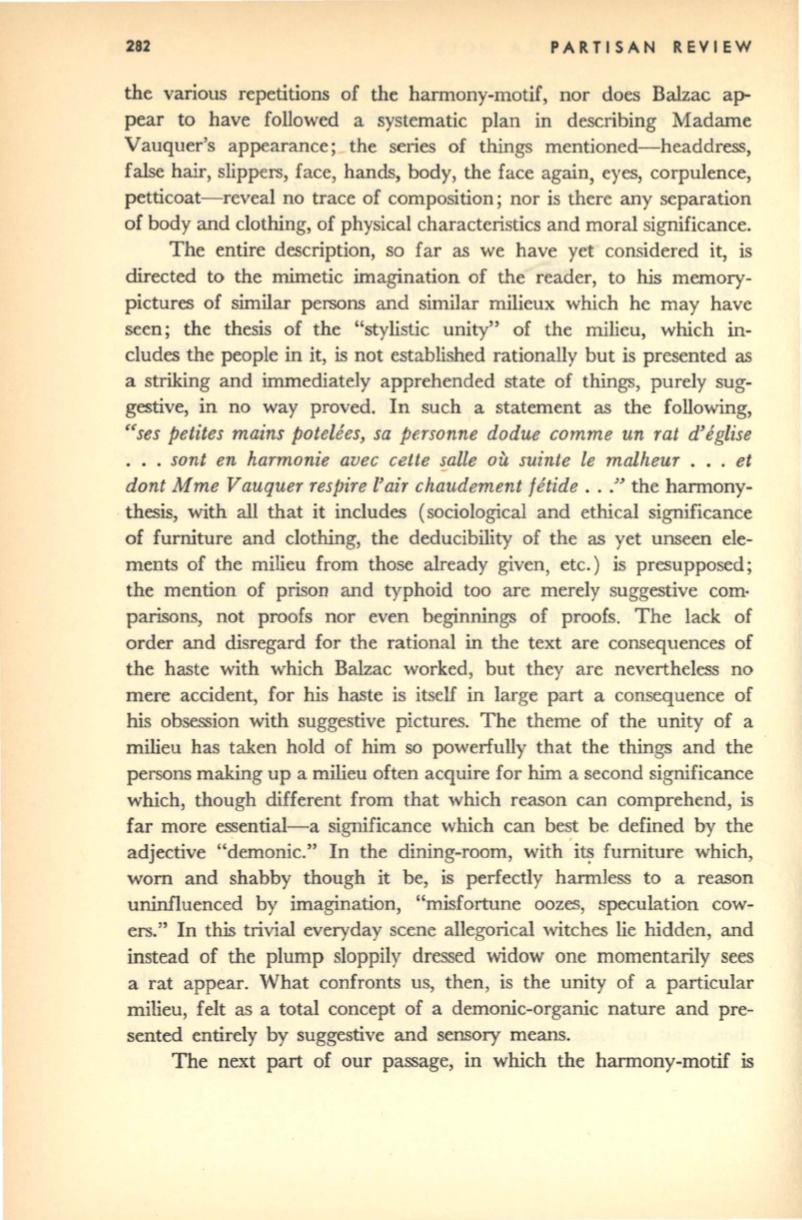
282
PARTISAN REVIEW
the various repetitions of the harmony-motif, nor does Balzac ap–
pear to have followed a systematic plan in describing Madame
Vauquer's appearance; the series of things mentioned-headdress,
false hair, slippers, face, hands, body, the face again, eyes, corpulence,
petticoat-reveal no trace of composition; nor is there any separation
of body and clothing, of physical characteristics and moral significance.
The entire description, so far as we have yet considered it, is
directed to the mimetic imagination of the reader, to
his
memory–
pictures of similar persons and similar milieux which he may have
seen; the thesis of the "stylistic unity" of the milieu, which in–
cludes the people in it, is not established rationally but is presented as
a striking and immediately apprehended state of things, purely sug–
gestive, in no way proved. In such a statement as the following,
uses petites mains potetees, sa personne dodue comme un rat dJeglise
. . .
sont en harmonie avec cette
~alle
au
suinte le malheur
. . .
et
dont M me Vauquer respire
l'
air chaudement fetide
...
J)
the harmony–
thesis, with all that it includes (sociological and ethical significance
of furniture and clothing, the deducibility of the as yet unseen ele–
ments of the milieu from those already given, etc.) is presupposed;
the mention of prison and typhoid too are merely suggestive com·
parisons, not proofs nor even beginnings of proofs. The lack of
order and disregard for the rational in the text are consequences of
the haste with which Balzac worked, but they are nevertheless no
mere accident, for his haste is itself in large part a consequence of
his obsession with suggestive pictures. The theme of the unity of a
milieu has taken hold of him so powerfully that the things and the
persons making up a milieu often acquire for him a second significance
which, though different from that which reason can comprehend, is
far more essential-a significance which can best be defined by the
adjective "demonic." In the dining-room, with '
it~
furniture which,
worn and shabby though it be, is perfectly harmless to a reason
uninfluenced by imagination, "misfortune oozes, speculation cow–
ers." In this trivial everyday scene allegorical witches lie hidden, and
instead of the plump sloppily dressed widow one momentarily sees
a rat appear. What confronts us, then, is the unity of a particular
milieu, felt as a total concept of a demonic-organic nature and pre–
sented entirely by suggestive and sensory means.
The next part of our passage, in which the harmony-motif is


